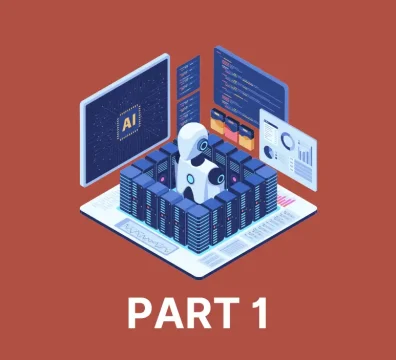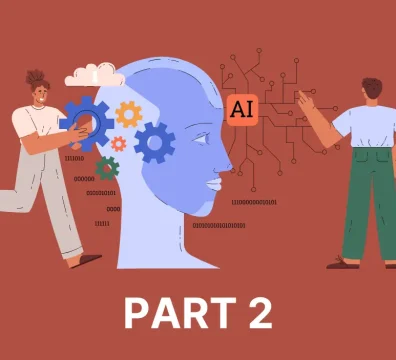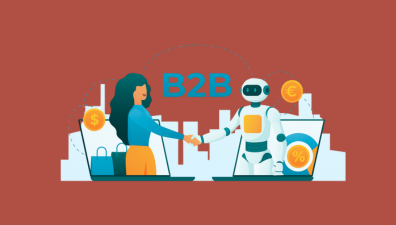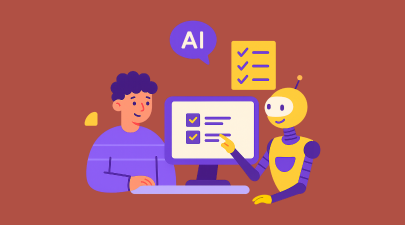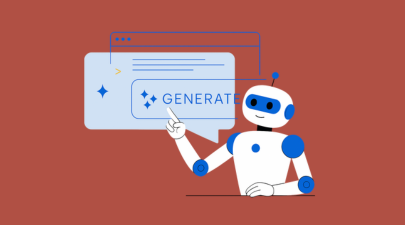Building on the insights from Part 1: Foundations, Applications, and Technologies Powering B2C and the success stories in Part 2: Real Examples of AI in B2C, this final chapter explores how businesses can move from adoption to intelligent evolution. Here, AI transforms from an operational tool into a creative collaborator, using generative intelligence to power marketing content, conversational engagement, and adaptive learning systems. These advancements enable brands to deliver experiences that are not only efficient but also emotionally resonant and continuously personalized.
This part also provides the strategic roadmap for sustainable AI deployment—covering readiness assessments, infrastructure choices, data quality, and change management. It looks beyond today’s innovations to what the next decade holds: hyper-personalization at scale, omnichannel immersion, IoT-integrated experiences, and AI-driven storytelling that predicts customer needs before they arise. With the right implementation strategy, AI for B2C becomes an ecosystem of trust, agility, and creativity that redefines the meaning of consumer intelligence.
Steps to Implement AI for B2C
While the potential of artificial intelligence to transform consumer-facing industries is widely recognized, many organizations still face challenges in successfully implementing AI for B2C. From aligning strategy with customer needs to navigating data privacy concerns, companies must take deliberate steps to ensure that AI initiatives deliver both business value and consumer trust. Unlike one-off technology upgrades, implementing AI for B2C requires a holistic approach that integrates data infrastructure, cross-functional collaboration, workforce training, and ongoing iteration.
Assessing Readiness and Business Needs
Artificial intelligence is no longer an abstract concept for B2C businesses; it is an operational reality shaping marketing, customer service, logistics, and product innovation. Yet, adopting AI for B2C is not as simple as purchasing an off-the-shelf tool or experimenting with a pilot project. Successful implementation begins with a thorough assessment of readiness and a clear understanding of business needs. Companies that skip this foundational stage often end up with fragmented systems, misaligned expectations, and wasted investment.

To maximize the transformative potential of AI for B2C, businesses must first analyze where AI fits into the customer journey, whether they have the data required to fuel it, and how they will measure its success. This stage involves three critical activities: identifying pain points in the consumer journey, evaluating data availability and governance, and setting measurable objectives with clear KPIs.
Identifying Core Pain Points in the Customer Journey
The first step in assessing readiness is identifying where AI can solve real problems. Too often, businesses approach AI for B2C with a technology-first mindset—focusing on what the technology can do rather than what the customer truly needs. To avoid this, companies should carefully map their customer journey and highlight the areas where consumers experience friction, frustration, or unmet needs.
- Personalization Gaps: In many B2C industries, customers are inundated with options but receive generic recommendations. Retailers, for example, may offer thousands of SKUs but fail to provide tailored product suggestions. Entertainment platforms may have extensive content libraries but struggle to guide users effectively. Identifying these personalization gaps highlights opportunities where AI for B2C recommendation engines or predictive analytics can create meaningful improvements.
- Customer Service Bottlenecks: Another common pain point lies in customer support. Long wait times, inconsistent responses, and limited service hours erode consumer trust. By identifying these issues, companies can evaluate the potential of AI for B2C tools such as chatbots, intelligent virtual assistants, and automated ticket classification systems that deliver faster and more accurate responses.
- Marketing Inefficiencies: Marketers often face challenges in targeting the right audience with the right message at the right time. Ad spend may be high, but conversion rates remain low due to poor segmentation. AI for B2C can address these pain points through predictive audience modeling, dynamic pricing, and automated A/B testing that continuously optimizes campaigns in real time.
- Post-Sales Retention Weaknesses: Beyond acquisition, companies must assess how well they retain customers. Pain points here include churn due to lack of engagement, irrelevant loyalty programs, or failure to anticipate customer dissatisfaction. AI for B2C solutions such as churn prediction models or personalized retention offers can address these gaps effectively.
By systematically identifying these issues, businesses ensure that AI for B2C implementation is driven by customer-centric insights rather than vague aspirations.
Evaluating Data Availability, Quality, and Governance
Once pain points are identified, the next step is evaluating whether the organization has the right data infrastructure to support AI initiatives. Data is the lifeblood of AI for B2C, and without robust data systems, even the most advanced algorithms will underperform.
- Assessing Data Availability: B2C businesses generate enormous amounts of consumer data from transactions, website visits, app interactions, loyalty programs, and customer service channels. However, having raw data is not the same as having usable data. Companies must evaluate whether their data covers the full spectrum of the customer journey. For instance, does the business only have purchase history, or does it also track browsing behavior, social media interactions, and service requests? Comprehensive data is necessary for AI for B2C to deliver holistic insights.
- Ensuring Data Quality: Data quality issues are among the most common reasons AI projects fail. Inaccurate, incomplete, or outdated data leads to biased predictions and irrelevant recommendations. B2C businesses must implement processes for cleaning, validating, and updating consumer data. This may involve resolving duplicate entries, filling in missing information, and removing outdated records. For example, an e-commerce platform that fails to clean its data may continue sending promotions for out-of-stock products, damaging trust and wasting marketing spend.
- Establishing Data Governance: Beyond availability and quality, governance is crucial. AI for B2C relies on sensitive consumer data, including purchase behavior, personal preferences, and sometimes even biometric data. Companies must establish clear policies for data ownership, access rights, and usage permissions. Governance frameworks should also ensure compliance with regulations like GDPR in Europe or CCPA in California. Without strong governance, businesses risk legal penalties and reputational harm.
- Breaking Down Data Silos: Data silos across departments remain a significant barrier. Marketing may have access to campaign data, sales may manage transaction records, and customer service may hold complaint logs, but none of these systems communicate effectively. AI for B2C requires integration across these silos to build unified consumer profiles. Cloud-based data lakes, APIs, and middleware platforms are increasingly used to consolidate fragmented data and create a single source of truth.
- Balancing Privacy and Innovation: Finally, businesses must balance the pursuit of personalization with consumer privacy. Transparency around how data is collected, stored, and used is essential for building trust. Offering customers control—such as opting in to personalized recommendations or choosing data-sharing preferences—ensures that AI for B2C adds value without overstepping ethical boundaries.
Setting Clear Business Objectives and KPIs for AI Adoption
Once the customer journey has been mapped and data readiness evaluated, businesses must define clear objectives for AI adoption. Without measurable goals, AI for B2C projects risk drifting into “proof-of-concept purgatory,” where initiatives remain experimental without delivering tangible business results.
- Aligning AI with Strategic Priorities: Objectives should align with broader business strategies. For example, a retailer seeking to expand market share may prioritize AI for B2C initiatives that improve customer acquisition through targeted marketing. A subscription-based service struggling with churn may focus on predictive retention models. Aligning AI with strategy ensures that investments contribute directly to overarching goals.
- Defining Key Performance Indicators (KPIs): KPIs provide the metrics by which AI for B2C success is measured. By setting KPIs early, businesses can track progress, identify issues, and demonstrate ROI to stakeholders. These may include:
- Conversion Rates: Improvement in sales or subscription conversions due to AI-powered recommendations.
- Customer Satisfaction Scores (CSAT/NPS): Enhanced satisfaction resulting from AI-driven customer support.
- Engagement Metrics: Increases in session length, click-through rates, or repeat visits due to personalized content.
- Operational Efficiency: Reductions in average handling time for customer support or decreases in ad spend per acquisition.
- Churn Rate Reduction: Lower attrition among existing customers due to predictive retention efforts.
- Establishing Timeframes and Benchmarks: AI for B2C is not a one-time deployment but an evolving process. Companies should define short-term milestones (e.g., launching a pilot chatbot within six months) and long-term benchmarks (e.g., achieving 20% improvement in customer retention within two years). Clear timelines keep initiatives on track and provide accountability across teams.
- Balancing Ambition with Realism: While AI for B2C offers transformative potential, companies must remain realistic. Overly ambitious goals—such as expecting AI to double revenue within months—set initiatives up for failure. Instead, organizations should focus on achievable targets that gradually scale in complexity and scope. This staged approach allows for learning, iteration, and building internal confidence.
Assessing readiness and business needs is the most critical step in implementing AI for B2C. By identifying pain points in the customer journey, evaluating data availability and governance, and setting clear objectives with measurable KPIs, companies lay a strong foundation for success. This stage ensures that AI adoption is not driven by hype or pressure but by strategic alignment with customer needs and business priorities.

Organizations that invest time in this preparatory phase are more likely to see AI for B2C deliver meaningful results—improving personalization, streamlining customer service, optimizing marketing, and ultimately driving loyalty and growth. Conversely, skipping these steps often leads to disjointed projects that fail to scale or deliver ROI.
AI for B2C is not just about technology; it is about strategy, data, and clarity of purpose. Companies that recognize this will be better positioned to transform their customer experiences and thrive in the rapidly evolving consumer landscape.
Building the Right Infrastructure
Artificial intelligence has become an indispensable driver of transformation in consumer-facing industries. From eCommerce to banking, entertainment to travel, organizations are increasingly embedding AI for B2C into their customer-facing strategies. However, the success of any initiative depends heavily on the infrastructure that supports it. Just as a skyscraper requires a solid foundation, AI systems demand carefully chosen platforms, seamless integration with existing systems, and robust safeguards for scalability, security, and compliance.
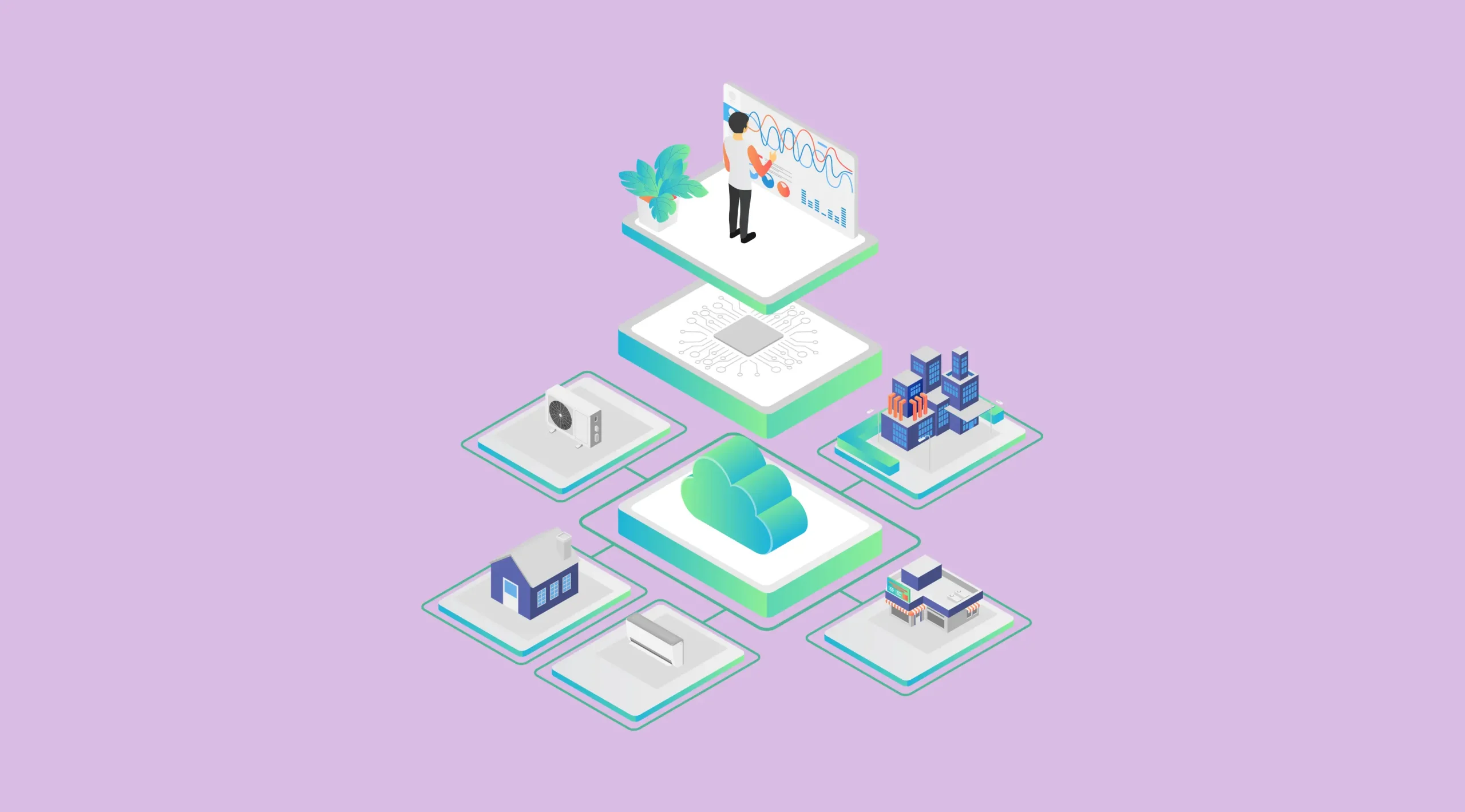
Building the right infrastructure for AI for B2C is not only about acquiring the latest technologies—it is about aligning deployment models with business objectives, ensuring interoperability with core systems, and adhering to regulatory frameworks that govern consumer data. This section explores three critical considerations in this journey: choosing the right deployment model, integrating AI into existing operational ecosystems, and ensuring long-term resilience through scalability, security, and compliance.
Choosing Between Cloud, On-Premise, or Hybrid AI Deployment
The first decision businesses face is determining where AI for B2C applications will run: in the cloud, on-premises, or within a hybrid environment. Each deployment model has unique benefits and trade-offs, and the choice depends on the organization’s size, industry, and specific use cases.
- Cloud Deployment: Cloud-based AI platforms are the most popular choice for many B2C businesses, especially startups and mid-sized organizations. Cloud deployment provides flexibility, scalability, and cost-efficiency. Companies can tap into AI services offered by major providers such as AWS, Google Cloud, and Microsoft Azure without investing heavily in physical infrastructure. For AI for B2C applications such as recommendation engines, chatbots, and predictive analytics, the cloud allows businesses to scale up quickly during peak demand, like holiday shopping seasons or product launches. Cloud platforms also provide pre-built AI models and APIs, reducing the time to market. However, reliance on third-party providers raises questions about data sovereignty and long-term cost control. Subscription fees may escalate as data volumes grow, and businesses must weigh this against the initial savings.
- On-Premise Deployment: On-premise deployment involves hosting AI for B2C solutions on in-house servers. This model is often favored by industries with strict compliance requirements, such as banking or healthcare, where consumer data must remain within organizational control. On-premise systems provide maximum oversight of data security and customization of AI models. For example, a retail bank implementing AI for B2C credit risk analysis may opt for on-premise deployment to ensure compliance with stringent financial regulations. While this option offers control, it demands significant upfront investment in hardware, software, and IT expertise. Scaling on-premise systems can also be slower compared to cloud-based alternatives.
- Hybrid Deployment: A hybrid model combines the strengths of cloud and on-premise deployment. Businesses may run sensitive data processing on local servers while leveraging cloud platforms for high-compute tasks such as training large-scale AI models. This balance allows organizations to benefit from cloud agility while maintaining control over critical data. In the context of AI for B2C, hybrid deployment is particularly effective for global retailers or telecom providers managing diverse customer data regulations across regions. By keeping sensitive data local while using cloud-based AI for real-time personalization, hybrid models provide both flexibility and compliance.
Ultimately, the choice between cloud, on-premise, or hybrid deployment should align with business needs, data sensitivity, and long-term scalability goals. Companies must also consider costs, vendor lock-in risks, and the pace of innovation they expect from AI for B2C initiatives.
Integrating AI with Existing CRM, eCommerce, and Marketing Systems
Deploying AI for B2C in isolation rarely generates the desired impact. Its true power emerges when AI is seamlessly integrated into the systems businesses already use to manage customer relationships, sales, and marketing. Integration ensures that AI does not operate in silos but enriches existing workflows with intelligence and automation.
- Integration with CRM Systems: Customer Relationship Management (CRM) platforms like Salesforce, HubSpot, and Zoho are central to B2C operations. They store valuable data on customer interactions, purchase histories, and engagement patterns. By integrating AI for B2C into CRM systems, companies can enhance these platforms with predictive insights and personalization. This integration transforms CRMs from static databases into dynamic, intelligence-driven systems that anticipate customer needs. For instance:
- AI models can predict which leads are most likely to convert, enabling sales teams to prioritize efforts.
- Chatbots integrated with CRM can access customer history to provide contextual responses during support interactions.
- Personalized recommendations can be delivered via email campaigns directly managed through the CRM.
- Integration with eCommerce Platforms: In retail and digital commerce, integrating AI for B2C into eCommerce platforms like Shopify, Magento, or WooCommerce is critical. AI can analyze browsing behavior, purchase patterns, and abandoned carts to generate real-time product recommendations. It can also optimize search results, tailoring them to individual users. For example, an AI system integrated with an eCommerce platform may notice that a customer frequently shops for eco-friendly products. It can then prioritize sustainable items in search results, adjust promotions, and even suggest complementary goods. This level of personalization drives higher conversion rates and builds stronger brand loyalty.
- Integration with Marketing Automation Tools: AI for B2C also amplifies the effectiveness of marketing automation platforms such as Marketo, Mailchimp, or Adobe Campaign. By feeding predictive analytics into these tools, companies can deliver highly targeted campaigns. Through this integration, marketing teams shift from reactive campaigns to proactive, data-driven strategies that continuously evolve with customer behavior.
- AI can segment customers into micro-groups based on behavior, rather than broad demographics.
- It can automate A/B testing, dynamically shifting campaign resources to the best-performing creatives.
- AI-driven content generation tools can produce personalized email subject lines, social posts, or even video snippets tailored to each consumer.
- Overcoming Integration Challenges: Integration is not without its challenges. Many B2C companies operate with legacy systems that were not designed for AI compatibility. Overcoming this requires APIs, middleware solutions, and potentially phased system upgrades. Investing in data standardization and interoperability protocols ensures that AI for B2C can flow seamlessly across systems, avoiding silos and redundancies.
Ensuring Scalability, Security, and Compliance (GDPR, CCPA)
The final piece of building infrastructure for AI for B2C is ensuring that solutions can grow with business needs while maintaining consumer trust through strong security and regulatory compliance.
- Scalability for Long-Term Growth: AI for B2C must be designed for scalability from the outset. Consumer-facing businesses often deal with seasonal spikes in demand, rapid geographic expansion, and constantly growing data volumes. Infrastructure should allow for elastic scaling, where resources can expand or contract based on demand. For example, an online retailer may see a tenfold surge in traffic during Black Friday. AI-driven recommendation engines, fraud detection systems, and chatbots must scale seamlessly to handle the increased load without degrading performance. Cloud platforms often provide this flexibility, but hybrid or on-premise systems must plan capacity proactively.
- Security as a Cornerstone of Consumer Trust: Security is non-negotiable in B2C environments. AI systems process sensitive consumer data—credit card numbers, addresses, preferences, and sometimes biometric information. Any breach can result in financial losses and irreparable damage to brand reputation. AI for B2C infrastructure must prioritize not just compliance but proactive protection, demonstrating to consumers that their trust is valued. Key security measures include:
- Encryption: All customer data should be encrypted at rest and in transit.
- Access Controls: Role-based access ensures only authorized personnel can interact with sensitive systems.
- Monitoring and Alerts: Continuous monitoring detects unusual activity and prevents breaches before they escalate.
- Compliance with Regulations (GDPR, CCPA, and Beyond): Global regulations such as the European Union’s GDPR and California’s CCPA set strict rules on how consumer data can be collected, stored, and used. Businesses implementing AI for B2C must embed compliance into infrastructure design. This means providing consumers with transparency on how their data is used; allowing them to opt in or out of data collection practices; offering the right to access, correct, or delete personal data. Failure to comply results not only in hefty fines but also in erosion of consumer trust. Beyond GDPR and CCPA, businesses must prepare for emerging regulations in other regions, making adaptability a critical feature of infrastructure design.
- Ethical Considerations Beyond Legal Compliance: Beyond legal requirements, ethical considerations are essential. AI for B2C systems must avoid bias, ensure fairness, and respect cultural sensitivities. For example, personalization algorithms should not inadvertently exclude certain consumer groups or reinforce stereotypes. Building infrastructure with fairness audits, explainability tools, and bias detection mechanisms ensures that AI systems enhance inclusivity and equity.
Building the right infrastructure is a critical step in implementing AI for B2C. Choosing between cloud, on-premise, or hybrid deployment determines how businesses balance flexibility, control, and compliance. Seamless integration with CRM, eCommerce, and marketing systems ensures that AI augments existing workflows rather than creating isolated solutions. Finally, scalability, security, and compliance safeguard long-term growth while protecting consumer trust.

Organizations that approach infrastructure thoughtfully are better positioned to harness the transformative power of AI for B2C. They create not just isolated innovations but sustainable ecosystems that evolve with consumer expectations, regulatory landscapes, and technological advancements. Ultimately, the strength of AI for B2C lies not only in algorithms but also in the robust, adaptable, and ethical infrastructure that enables them.
Selecting AI Tools and Vendors
Once an organization has assessed its readiness and established the right infrastructure, the next critical step in implementing AI for B2C is selecting the right tools and vendors. The AI ecosystem is vast and rapidly evolving, filled with platforms, providers, and open-source solutions that all claim to deliver transformative results. Choosing the right mix can make the difference between a successful AI rollout that scales with business needs and an expensive experiment that fails to integrate into daily operations.

This stage involves evaluating tools based on clear criteria, building effective partnerships with technology providers and consultants, and making informed decisions between open-source and commercial AI platforms. Businesses that take a structured approach to vendor and tool selection can ensure that their AI for B2C initiatives are sustainable, cost-effective, and aligned with long-term strategy.
Criteria for Evaluating AI Solutions (Cost, Features, Integration Ease)
When selecting AI tools, businesses should go beyond marketing claims and focus on practical evaluation criteria. Each organization’s needs will differ depending on its size, industry, and customer engagement model, but certain dimensions are universally important.
- Cost and Total Cost of Ownership (TCO): Cost is often the first consideration, but evaluating AI for B2C solutions requires looking beyond the initial price tag. A low upfront cost can be misleading if the long-term expenses of scaling, customization, or maintenance are high. Conversely, premium solutions may justify their price if they deliver faster ROI and reduce operational inefficiencies. Businesses must calculate the total cost of ownership, which includes:
- Licensing or subscription fees.
- Infrastructure costs if the solution requires on-premise hardware or cloud scaling.
- Implementation and integration expenses.
- Training and onboarding costs for staff.
- Ongoing support, updates, and potential vendor lock-in fees.
- Features and Capabilities: AI for B2C solutions should be evaluated on their ability to address specific use cases. Businesses should prioritize tools that deliver core functionalities aligned with identified customer journey pain points. It is easy to be swayed by advanced features that may not be relevant or provide measurable impact. Features to consider include:
- Personalization engines that tailor product recommendations, content, or offers.
- Natural language processing for chatbots, voice assistants, and sentiment analysis.
- Predictive analytics for customer churn, demand forecasting, or inventory optimization.
- Content generation tools for automated marketing campaigns and dynamic creatives.
- Data visualization and reporting capabilities that translate AI outputs into actionable insights.
- Ease of Integration: No matter how advanced, AI for B2C tools must integrate seamlessly with existing systems—CRM, eCommerce platforms, marketing automation tools, ERP systems, and customer service software. Poor integration leads to data silos, operational inefficiencies, and delayed ROI. Ease of integration not only accelerates deployment but also ensures that AI for B2C enhances, rather than disrupts, current operations. Evaluation questions should include:
- Does the solution provide APIs or middleware for easy connectivity?
- Can it plug into cloud-based environments as well as legacy on-premise systems?
- How much customization is needed to adapt the tool to existing workflows?
- Usability and Scalability: User experience is also a key consideration. Solutions must be accessible to non-technical staff such as marketers, sales teams, or customer service agents, not just data scientists. Tools with intuitive interfaces, dashboards, and automation capabilities make adoption smoother. Equally important is scalability. A tool may perform well in pilot projects but struggle under enterprise-wide workloads. Businesses must ensure the platform can handle increasing data volumes, customer interactions, and geographic expansion without performance degradation.
Partnering with AI Technology Providers and Consultants
Choosing AI tools is not only about software; it is also about selecting the right partners. For many businesses, particularly those new to AI for B2C, working with technology providers and consultants accelerates adoption and minimizes risks.
- Evaluating Vendor Expertise and Track Record: Vendors should be evaluated based on their domain expertise and proven success in B2C contexts. A provider specializing in industrial automation may not be the best fit for consumer personalization needs. Reviewing case studies, references, and testimonials can help verify whether the vendor has delivered measurable outcomes for similar businesses.
- Support and Training Services: The value of AI for B2C extends beyond implementation—it requires ongoing support, model updates, and staff training. Vendors offering comprehensive support packages and training programs enable businesses to maximize tool adoption and maintain relevance as technologies evolve.
- Strategic Partnerships, Not Just Transactions: Businesses should view AI vendors as long-term strategic partners rather than one-time software providers. A strong partnership allows for co-innovation, where vendors adapt features based on client feedback and jointly explore new opportunities. This collaborative approach is especially important in fast-changing B2C industries, where consumer behaviors and market trends evolve rapidly.
- Role of Consultants and System Integrators: For organizations with limited internal expertise, partnering with consultants or system integrators can bridge knowledge gaps. Consultants help define AI for B2C strategy, select appropriate tools, and ensure alignment with business objectives. System integrators specialize in connecting AI platforms with existing IT ecosystems, smoothing the transition from legacy systems to intelligent workflows. By combining vendor solutions with consulting expertise, businesses gain both the technology and the guidance necessary for long-term success.
Considering Open-Source vs. Commercial AI Platforms
A significant decision in tool selection involves choosing between open-source and commercial AI platforms. Both offer advantages, but the right choice depends on organizational needs, resources, and strategic priorities.
- Open-Source AI Platforms: Open-source platforms like TensorFlow, PyTorch, or Hugging Face provide flexibility, customization, and cost advantages. For companies with strong internal data science teams, open-source AI for B2C allows for experimentation and innovation without licensing costs. Advantages include access to vibrant developer communities that contribute updates and improvements; transparency in code, reducing concerns about vendor lock-in; flexibility to customize models for niche consumer use cases. Challenges include the need for significant in-house expertise, ongoing maintenance, and integration complexity. Smaller organizations without dedicated AI talent may struggle to maximize open-source solutions.
Commercial AI Platforms: Commercial AI for B2C platforms, such as those offered by Salesforce Einstein, Adobe Sensei, or Google Vertex AI, provide out-of-the-box solutions with user-friendly interfaces, vendor support, and integration capabilities. They are ideal for businesses seeking speed to market and minimal technical overhead. Advantages include pre-trained models tailored for common B2C use cases (e.g., recommendation engines, chatbots); vendor support for deployment, training, and compliance; seamless integration with enterprise systems and cloud services. Drawbacks include higher costs, risk of vendor lock-in, and limited customization compared to open-source alternatives. - Hybrid Approaches: Many businesses adopt a hybrid approach, combining open-source tools for flexibility with commercial platforms for mission-critical functions. For example, a retailer may use TensorFlow to experiment with AI for B2C personalization models but rely on Salesforce Einstein to scale marketing automation. This approach provides a balance of innovation and reliability.
Selecting AI tools and vendors is one of the most consequential decisions in the journey to implement AI for B2C. The process requires evaluating solutions not only on cost but also on features, integration, usability, and scalability. Beyond the tools themselves, businesses must foster partnerships with vendors and consultants who bring domain expertise, ongoing support, and co-innovation opportunities. Finally, the choice between open-source and commercial platforms—or a hybrid combination—shapes how flexible, cost-effective, and future-proof the AI ecosystem will be.

Companies that take a structured, thoughtful approach to this stage are far more likely to achieve sustainable success with AI for B2C. Rather than chasing buzzwords or rushing into vendor contracts, they prioritize alignment with business goals, consumer needs, and long-term scalability. In doing so, they build AI foundations that not only solve today’s challenges but also adapt to tomorrow’s opportunities in the ever-evolving B2C landscape.
Pilot Testing and Scaling
Introducing artificial intelligence into consumer-facing operations is a transformative journey, but success does not come from immediate large-scale rollouts. Instead, the most effective approach is to start small with pilot projects, learn from results, and then scale systematically across multiple functions. Pilot testing allows organizations to experiment with AI for B2C in a controlled environment, measure outcomes against predefined metrics, and refine solutions before expanding them enterprise-wide. Scaling, meanwhile, is about ensuring that these AI solutions evolve from isolated experiments into fully integrated systems that drive value across the customer journey.
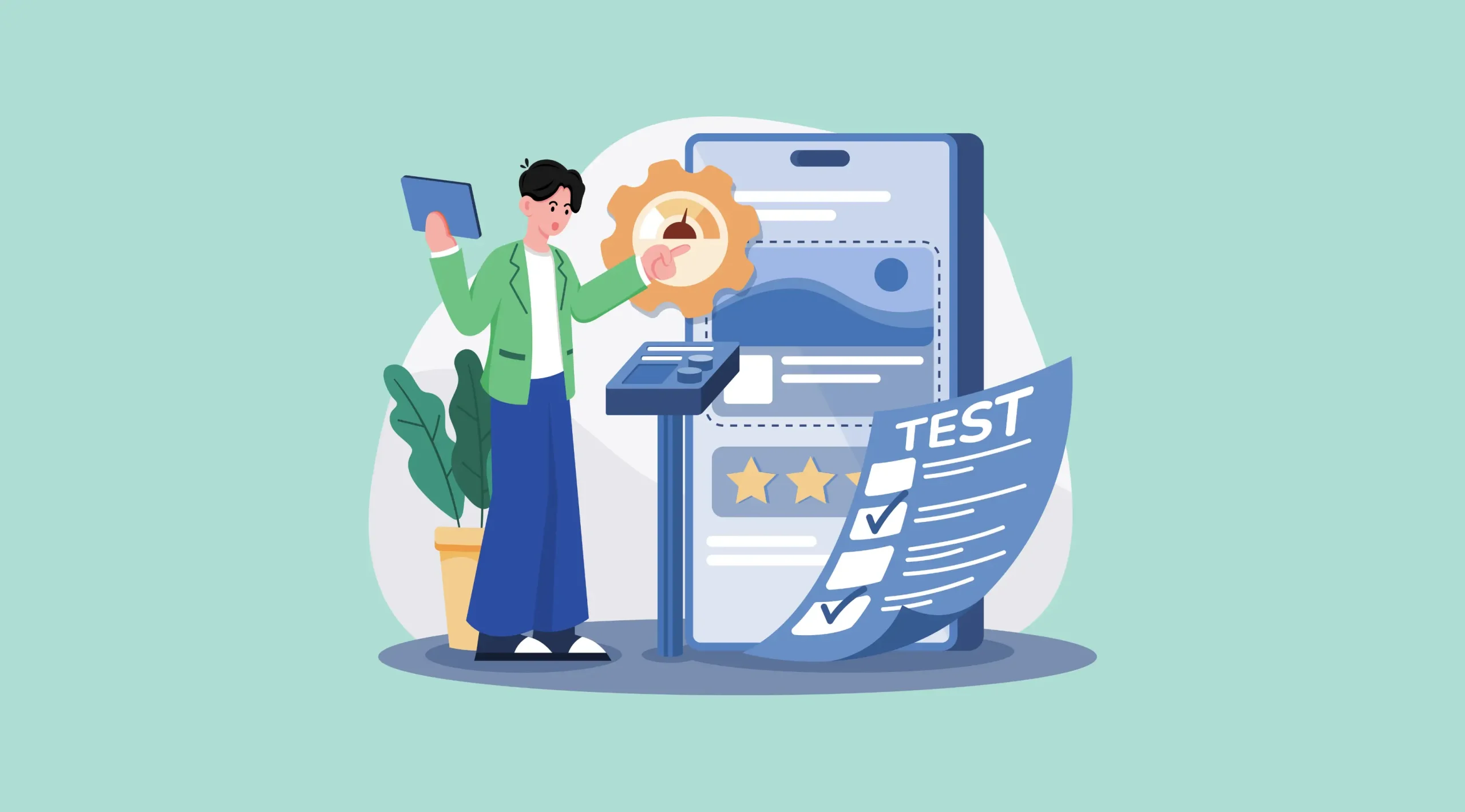
This stage of implementation emphasizes three pillars: designing pilots with measurable outcomes, iterating based on feedback and performance data, and scaling AI initiatives across functions such as marketing, sales, customer service, and beyond.
Designing Pilot Projects Focused on Measurable Outcomes
Pilot projects are the proving ground for AI for B2C. They allow businesses to validate assumptions, test technologies, and assess consumer responses without committing extensive resources upfront. But pilots must be strategically designed to avoid becoming unfocused experiments.
- Narrowing the Scope: Effective pilots begin with a well-defined use case. Rather than trying to overhaul the entire customer experience at once, businesses should focus on a specific problem. This narrow focus ensures that the project is manageable and outcomes can be measured accurately. For instance:
- An eCommerce retailer might test AI-driven product recommendations on a single category like footwear.
- A telecom company might deploy a chatbot to handle billing inquiries before expanding to technical support.
- A streaming service might experiment with AI for B2C personalization on a subset of its user base.
- Setting Clear Objectives: Pilot projects should have concrete goals tied to business outcomes. Objectives might include improving click-through rates by 15%, reducing average handling time in customer support by 20%, or increasing retention among a specific customer segment. Without clear objectives, it becomes difficult to determine whether the AI for B2C initiative succeeded or failed.
- Defining Metrics for Success: Key performance indicators (KPIs) must be established before the pilot begins. By tying results to measurable KPIs, businesses ensure that AI for B2C pilots generate actionable insights rather than vague impressions. Common metrics include:
- Conversion rates and sales uplift.
- Customer satisfaction scores (CSAT or NPS).
- Reduction in churn rates.
- Efficiency gains, such as lower cost per acquisition or faster resolution times.
- Engagement measures, like session length or frequency of interactions.
- Building Cross-Functional Teams: Pilot projects should not be run solely by data scientists or IT departments. A cross-functional team—including marketing, sales, operations, and compliance—ensures that AI for B2C pilots reflect diverse perspectives. This alignment reduces the risk of technical solutions that fail to meet consumer or business needs.
Iterating Based on Feedback and Performance Metrics
Once a pilot project is launched, the next step is to gather feedback and analyze performance data. AI for B2C thrives on iteration—continuous refinement based on real-world outcomes.
- Monitoring in Real Time: Businesses must track performance continuously rather than waiting until the end of a pilot. Dashboards and reporting systems can highlight whether the AI tool is delivering the expected impact. For instance, if a recommendation engine shows declining click-through rates after an initial spike, it may indicate model drift or customer fatigue.
- Gathering Consumer Feedback: Quantitative metrics tell only part of the story. Direct consumer feedback provides qualitative insights into how the AI for B2C solution is perceived. Surveys, focus groups, and social listening tools can capture consumer sentiment and guide refinements. For example:
- Do customers feel that chatbots are helpful or impersonal?
- Are product recommendations relevant, or do they feel intrusive?
- Does AI-driven personalization enhance trust or raise privacy concerns?
- Iterative Refinement of Models: AI models must be retrained and fine-tuned based on feedback and performance data. Iteration may involve adjusting algorithms, expanding training datasets, or incorporating new variables. For instance, a predictive churn model that underestimates attrition in younger demographics may need to incorporate behavioral signals unique to that age group.
- Identifying Unintended Consequences: Pilots often reveal unintended outcomes. For example, a dynamic pricing system might boost short-term revenue but create customer backlash if perceived as unfair. Identifying these risks early allows companies to adjust strategies before scaling. Iteration is not just about optimizing performance but also ensuring that AI for B2C aligns with ethical standards and brand values.
- Documenting Learnings: Every pilot should produce a knowledge base of lessons learned. Documenting what worked, what failed, and why ensures that future AI for B2C initiatives build on past experiences rather than repeating mistakes.
Scaling AI Initiatives Across Multiple B2C Functions
Once pilots demonstrate measurable success and refinements are made, businesses can move toward scaling AI initiatives across the organization. Scaling is about turning isolated wins into enterprise-wide transformation.
- Expanding Across Channels and Customer Segments: The first step in scaling is broadening the scope .Scaling across channels ensures consistency in consumer experience. A customer who interacts with an AI for B2C chatbot on a website should receive equally personalized treatment on mobile apps, email, and in-store kiosks. For example:
- A pilot chatbot that handled billing inquiries can expand to manage technical troubleshooting and product recommendations.
- A recommendation engine tested on one product category can be extended to the entire catalog.
- Personalized marketing campaigns targeted at one demographic can expand to global audiences.
- Building Enterprise-Wide Data Ecosystems: Scaling requires unified data systems that span departments. Fragmented data silos limit the effectiveness of AI for B2C at scale. Organizations must invest in centralized data lakes, APIs, and governance frameworks to enable seamless sharing of consumer insights across marketing, sales, and customer support.
- Automating Workflows Across Functions: AI for B2C becomes more powerful when embedded into end-to-end workflows rather than isolated tasks.Scaling is not just about deploying AI widely but also about creating interconnected systems that drive synergy across functions. For instance:
- Predictive analytics in marketing can automatically feed insights into CRM systems for sales teams.
- AI-driven fraud detection in payments can trigger alerts in customer service to assist affected users proactively.
- Sentiment analysis from social media can inform product development teams about emerging trends.
- Establishing Governance for Enterprise Scaling: As AI for B2C expands, governance becomes increasingly critical. Businesses must establish frameworks for ethical use, transparency, and accountability. Governance ensures that AI systems avoid bias, respect privacy, and maintain compliance with regulations like GDPR and CCPA. Without governance, scaling can magnify risks alongside benefits.
- Training and Change Management: Scaling requires cultural adaptation. Employees across functions must be trained to work alongside AI systems and interpret their outputs. Change management initiatives should emphasize that AI for B2C augments rather than replaces human roles. For example, customer service agents should be trained to use AI-generated suggestions while maintaining empathy in human interactions.
- Measuring Long-Term ROI: Finally, businesses must measure the impact of scaled AI initiatives on long-term performance. Metrics should extend beyond pilot KPIs to include broader outcomes like customer lifetime value, brand equity, and operational efficiency across functions. By continuously measuring ROI, organizations ensure that AI for B2C investments remain aligned with evolving business priorities.
Pilot testing and scaling represent a pivotal stage in implementing AI for B2C. Pilots provide a safe environment to validate technologies, measure outcomes, and refine solutions, while scaling transforms these successes into enterprise-wide strategies that enhance customer experience and drive business growth.

The process requires careful planning: designing focused pilots with measurable KPIs, iterating based on data and consumer feedback, and scaling responsibly across channels and functions. Companies that approach this process methodically avoid the pitfalls of rushed deployments or fragmented solutions.
Ultimately, AI for B2C is not a one-time project but an evolving capability. Pilots create proof points, iteration ensures adaptability, and scaling drives sustained transformation. By following this structured approach, businesses can move beyond experimentation to build AI ecosystems that deliver lasting value for both consumers and organizations in the increasingly competitive B2C marketplace.
Change Management and Training
Artificial intelligence is no longer an isolated tool used only by technology-driven companies. With the rise of AI for B2C, businesses across industries are deploying intelligent systems to personalize customer experiences, automate interactions, and predict consumer needs. However, the success of these initiatives depends not only on algorithms and infrastructure but also on people. Employees must be prepared to work with AI, managers must guide teams through change, and organizations must cultivate cultures that embrace innovation.

This stage of implementation is where technology meets human adaptability. Change management and training ensure that AI for B2C becomes a value-adding force rather than a disruptive challenge. By preparing teams for adoption, equipping staff with new skills, and embedding continuous learning into corporate DNA, businesses can overcome resistance and maximize the benefits of AI in customer-facing operations.
Preparing Teams for AI Adoption and Reducing Resistance
Many organizations underestimate how strongly employees may resist new technologies. For some, AI represents the fear of job loss. For others, it creates anxiety about their ability to adapt. In the context of AI for B2C, this resistance is especially critical because customer-facing roles—sales representatives, call center agents, marketers—are often directly impacted by AI-driven automation.
- Transparent Communication from Leadership: The first step in preparing teams is building trust through transparent communication. Clear communication reduces uncertainty and ensures employees view AI as an enabler, not a threat. Leaders must explain:
- Why the company is investing in AI for B2C.
- How AI will support, rather than replace, human roles.
- What opportunities AI creates for employees in terms of efficiency and growth.
- Involving Employees in Early Stages: Resistance decreases when employees are involved in shaping AI for B2C adoption. Pilot projects can be co-designed with frontline staff, allowing them to provide feedback on usability and relevance. This involvement fosters ownership and demonstrates that AI implementation is a collaborative initiative, not a top-down imposition.
- Addressing Fears of Job Displacement: One of the most common concerns is that AI for B2C will replace jobs, especially in repetitive tasks like customer service or data entry. Businesses must reframe this narrative: AI automates repetitive functions, but it also creates space for employees to focus on higher-value activities such as relationship building, creative problem-solving, and strategic planning. Case studies can illustrate how AI has augmented rather than eliminated roles in similar industries.
- Building Psychological Safety: Adoption requires an environment where employees feel safe experimenting with AI tools. Managers should encourage teams to test, learn, and share feedback without fear of judgment. This sense of psychological safety is crucial for reducing resistance and accelerating adoption.
Training Staff to Collaborate Effectively with AI Systems
AI adoption requires new skill sets across different levels of the organization. Marketers may need to interpret AI-generated consumer insights, sales agents must learn to use AI-assisted recommendations, and customer service teams should adapt to chatbots and voice assistants. Training programs must focus not only on technical skills but also on soft skills such as adaptability, problem-solving, and empathy.
- Practical, Role-Specific Training: Generic training is less effective than role-based programs. Role-specific training ensures that employees see immediate relevance to their daily responsibilities. Examples include:
- Customer service representatives: Training on how to handle escalations when chatbots transfer complex queries.
- Marketers: Understanding how to leverage AI for B2C tools for campaign personalization and automated A/B testing.
- Managers: Interpreting AI-generated dashboards to make faster, data-driven decisions.
- Human-AI Collaboration Frameworks: Training should emphasize collaboration rather than competition between humans and AI. For instance, AI for B2C chatbots can handle repetitive queries, while human agents manage nuanced cases requiring empathy. AI-driven predictive analytics may identify at-risk customers, but human intervention is needed to design retention strategies. Employees must understand how to complement AI systems rather than resist them.
- Building Digital Literacy Across the Workforce: Even employees who are not directly interacting with AI systems benefit from digital literacy. Basic knowledge of how AI works—data inputs, algorithms, and outputs—demystifies the technology and reduces fear. Companies can organize workshops, e-learning modules, and interactive demos to raise general awareness.
- Continuous Access to Resources: One-off training sessions are insufficient. Businesses should provide ongoing access to learning platforms, FAQs, video tutorials, and peer communities where employees can share knowledge about AI for B2C tools. This ensures that staff can continue to learn at their own pace.
Establishing a Culture of Continuous Learning and Innovation
True success in AI for B2C requires a cultural shift, not just technical deployment. Organizations must move from one-time adoption to continuous innovation, where employees actively seek ways to leverage AI to improve consumer interactions.
- Encouraging Experimentation and Creativity: AI adoption should be framed as an opportunity to innovate. Employees should be encouraged to propose new use cases, experiment with AI features, and share creative applications. For example, a customer service team might suggest integrating AI sentiment analysis into ticketing systems to prioritize urgent cases.
- Recognition and Incentives: A culture of continuous learning is reinforced when contributions are recognized. Companies can reward employees who successfully leverage AI for B2C to improve outcomes. Recognition may take the form of bonuses, promotions, or public acknowledgment during company meetings. Incentives encourage wider participation in AI adoption.
- Leadership Commitment to Lifelong Learning: Leaders play a central role in modeling continuous learning. When executives attend AI workshops or actively use AI tools in their decision-making, they signal that learning is a shared responsibility across all levels. This top-down commitment reinforces the importance of innovation.
- Embedding AI Learning into Career Development: AI for B2C should be integrated into career development paths. Employees who master AI-related skills can be fast-tracked into leadership roles, while new job titles such as “AI-enabled marketer” or “AI-assisted sales manager” reflect the evolving nature of consumer-facing industries. Embedding AI into professional growth ensures that learning is not optional but central to advancement.
- Cross-Department Collaboration: Continuous innovation requires breaking down silos. Marketing, sales, IT, and operations must collaborate on AI projects, sharing data and insights to improve outcomes. Hackathons, cross-functional workshops, and AI innovation labs can provide platforms for this collaboration.
- Measuring Cultural Shifts: Cultural change is intangible, but it can be measured through employee surveys, adoption rates of AI tools, and the number of new ideas submitted for AI use cases. These indicators show whether the organization is moving toward a culture of curiosity and experimentation.
Change management and training are critical to the success of AI for B2C. Technology alone cannot transform consumer-facing industries—it must be supported by people who are prepared, trained, and motivated to use it effectively. Preparing teams for adoption reduces resistance, training staff ensures productive human-AI collaboration, and establishing a culture of continuous learning embeds innovation into the organization’s DNA.

Businesses that prioritize these human-centered steps are far more likely to achieve lasting success with AI for B2C. They create workforces that not only adapt to new tools but also embrace them as opportunities for growth, creativity, and consumer impact. In doing so, organizations position themselves not just as adopters of technology but as leaders in shaping the future of consumer engagement.
Outcomes and Evaluation
The implementation of artificial intelligence across consumer-facing industries is often described as transformative, but businesses must measure this transformation in tangible terms. Implementing AI for B2C is not merely about deploying algorithms or automating workflows—it is about generating measurable outcomes that contribute to both consumer satisfaction and business performance. Without systematic evaluation, companies risk investing in advanced technologies without knowing whether they deliver real value.

This section examines how organizations can evaluate the outcomes of AI for B2C initiatives. It covers two critical aspects: first, measuring ROI through financial and experiential gains, and second, recognizing the challenges and limitations that can undermine success. By balancing measurable outcomes with an understanding of inherent risks, businesses can adopt a realistic and sustainable approach to AI for B2C.
Measuring ROI of AI in B2C
Return on investment (ROI) is one of the most pressing concerns for executives considering AI adoption. Unlike other business initiatives, AI for B2C generates value in multiple forms—direct revenue, operational efficiency, customer retention, and brand loyalty. Evaluating ROI requires a holistic framework that accounts for financial gains as well as intangible improvements in consumer experience.
Revenue Growth Through Personalization
One of the most significant revenue drivers of AI for B2C is personalization. By leveraging data from browsing history, past purchases, demographic attributes, and even real-time behaviors, businesses can create tailored recommendations, targeted promotions, and hyper-relevant marketing campaigns.
- Personalized Recommendations: Recommendation engines, like those used by Amazon or Netflix, increase average order value and drive repeat purchases by ensuring customers see products or content they are most likely to engage with.
- Dynamic Marketing Campaigns: AI enables real-time campaign optimization, ensuring that the right messages reach the right consumer at the right moment. Personalized email campaigns alone can deliver open rates 30–50% higher than generic emails.
- Localized Pricing and Offers: AI for B2C can adjust pricing strategies for different consumer segments, boosting sales in competitive markets while protecting margins in premium segments.
Revenue growth through personalization is not only about short-term sales; it builds long-term customer lifetime value by reinforcing relevance and loyalty at every interaction.
Cost Savings in Operations and Support
AI for B2C also generates ROI by lowering costs, especially in operational processes and customer support functions.
- Automated Customer Service: Chatbots and voice assistants can resolve up to 70% of routine customer inquiries, reducing reliance on human agents. This leads to substantial cost reductions in call centers while maintaining round-the-clock service.
- Operational Efficiency: Predictive analytics optimizes inventory management, reducing overstock and understock scenarios that otherwise lead to waste and lost revenue. Logistics companies use AI to optimize delivery routes, cutting fuel costs and reducing delays.
- Fraud Detection and Risk Management: Financial institutions save millions annually by deploying AI for B2C systems that detect fraudulent transactions in real time, minimizing losses and safeguarding customer trust.
By automating repetitive tasks and optimizing resource allocation, AI frees up human employees for higher-value work, delivering both direct savings and indirect benefits like improved productivity.
Increased Retention and Loyalty Metrics
Retention and loyalty are equally important measures of ROI. Acquiring new customers is significantly more expensive than retaining existing ones, making loyalty a cornerstone of B2C success. AI contributes to retention through:
- Churn Prediction: Machine learning models can identify customers at risk of leaving by analyzing behavioral signals such as reduced engagement or negative feedback. Businesses can intervene with targeted offers or proactive support.
- Loyalty Program Optimization: AI for B2C enables loyalty programs that adapt to individual customer behaviors. Instead of offering generic points or discounts, AI tailors rewards that align with personal preferences, making programs more engaging.
- Sentiment Analysis: By monitoring social media and customer reviews, AI identifies shifts in consumer sentiment, allowing companies to address issues before they escalate into churn.
The impact of AI on retention goes beyond preventing churn—it strengthens emotional connections with consumers by delivering consistently positive experiences, which is critical in competitive markets where switching costs are low.
Challenges and Limitations
While the benefits of AI for B2C are compelling, they are not without challenges. Every implementation faces obstacles ranging from regulatory compliance to technical barriers. Recognizing these challenges is essential to setting realistic expectations and mitigating risks.
Data Privacy Concerns (GDPR, CCPA)
One of the most pressing challenges in AI for B2C is consumer data privacy. AI systems rely on vast amounts of personal information to deliver personalization and predictive capabilities. Regulations such as the EU’s General Data Protection Regulation (GDPR) and California’s Consumer Privacy Act (CCPA) impose strict rules on how data is collected, stored, and processed.
- Consent Management: Businesses must obtain explicit consent for data use, complicating data collection strategies.
- Data Transparency: Consumers increasingly demand to know how their data is being used. Failure to provide transparency can damage trust, even if legal requirements are met.
- Data Minimization: Regulations require businesses to collect only the data necessary for specific purposes. This can restrict the scope of AI models that thrive on large datasets.
Failure to comply not only leads to heavy fines but also risks brand reputation. AI for B2C initiatives must therefore embed privacy by design, ensuring that compliance is a core feature, not an afterthought.
AI Explainability and Trust Issues
Another limitation is the “black box” nature of many AI models. Consumers and regulators increasingly demand explainability—understanding how an algorithm reached a decision.
- Lack of Transparency: When an AI system recommends a loan denial or dynamic pricing, consumers may feel distrustful if they cannot understand the reasoning behind it.
- Bias and Fairness: AI models can inadvertently replicate biases present in training data, leading to unfair outcomes such as excluding certain demographics from personalized offers.
- Consumer Skepticism: If customers perceive AI-driven personalization as manipulative or invasive, they may disengage rather than stay loyal.
To overcome these issues, companies must invest in explainable AI models, bias detection tools, and consumer education. Building trust in AI for B2C is as important as optimizing accuracy.
Technical and Integration Hurdles
The technical complexity of AI for B2C can also hinder success.
- Legacy Systems: Many organizations still operate on outdated IT infrastructures that are incompatible with modern AI platforms. Integrating new tools with existing CRM, ERP, or eCommerce systems can be costly and time-consuming.
- Data Quality Issues: AI models require clean, structured, and comprehensive data. Many companies struggle with fragmented data spread across silos, undermining the accuracy of AI outputs.
- Scalability Challenges: Pilots may succeed, but scaling AI across global operations often reveals performance bottlenecks.
- Talent Shortages: Skilled AI professionals are in high demand, and organizations without strong internal expertise may struggle to implement and maintain AI solutions effectively.
Overcoming these hurdles requires strategic planning, phased rollouts, and partnerships with technology vendors and consultants who specialize in AI for B2C.
Future Outlook of AI for B2C
Artificial intelligence has already reshaped consumer-facing industries by enabling personalization, predictive analytics, and smarter customer engagement. Yet what we have seen so far is only the beginning. The future outlook of AI for B2C suggests a more profound transformation, where intelligent systems will not only support businesses in serving their customers but will also anticipate, predict, and co-create experiences with them.

The rapid pace of innovation in AI, combined with advances in data availability, edge computing, and connected devices, means that consumer experiences will soon become even more immersive, seamless, and contextually aware. This section explores what lies ahead: the emerging trends shaping the near future and the transformative shifts expected over the next decade.
Emerging Trends
In the next few years, we can expect incremental yet impactful improvements in how businesses apply AI for B2C. These trends will expand personalization, unify consumer experiences across channels, and extend AI into everyday devices consumers interact with.
Hyper-Personalization at Scale
Personalization is already a hallmark of AI for B2C, but the future will push it into new dimensions of hyper-personalization. Instead of relying solely on demographic or purchase history data, AI systems will combine real-time context—such as location, mood, or even biometric signals—to create ultra-specific experiences.
- Contextual Targeting: Imagine a consumer browsing an eCommerce app on their commute home. AI could detect the time of day, local weather conditions, and the individual’s browsing history to recommend a ready-to-cook meal kit tailored to their dietary preferences.
- Dynamic Content Creation: Hyper-personalization will extend into dynamically generated content, where AI crafts unique web pages, email campaigns, or app interfaces for every individual user.
- Impact on Loyalty: This level of personalization deepens emotional connections, as consumers feel seen and valued. However, it will also intensify the pressure on businesses to manage data responsibly and ethically, since hyper-personalization relies on highly granular data.
AI in Omnichannel Retail Experiences
Consumers increasingly move fluidly between online and offline channels, and AI for B2C will play a central role in orchestrating seamless omnichannel experiences.
- Unified Customer Profiles: AI systems will integrate touchpoints across websites, apps, physical stores, and call centers to create a single view of the customer. This ensures consistency, so a shopper who browses products online can receive tailored recommendations when they walk into a physical store.
- Real-Time Channel Switching: AI could detect that a customer abandons their online cart and proactively trigger an in-store coupon when the consumer is near a physical outlet.
- Augmented Shopping Journeys: Virtual and augmented reality, powered by AI, will enhance retail with try-before-you-buy features accessible both online and in-store.
Omnichannel AI for B2C ensures that customer experiences are not fragmented but integrated, no matter where or how consumers engage with a brand.
Integration with IoT and Wearable Devices
The rise of the Internet of Things (IoT) and wearables introduces new dimensions for AI for B2C. Everyday devices—from smartwatches to connected refrigerators—will become touchpoints for AI-driven experiences.
- Health and Fitness Applications: Wearables can collect biometric data such as heart rate, sleep patterns, and activity levels. AI for B2C in healthcare or fitness could recommend tailored diets, exercise routines, or wellness products.
- Smart Homes and Connected Appliances: A refrigerator that detects dwindling supplies could use AI to suggest grocery orders, which are automatically fulfilled via an eCommerce platform.
- Contextual Marketing: IoT data enables marketing campaigns that are contextually relevant. For example, a smartwatch detecting fatigue could trigger a coffee chain to send a personalized promotion nearby.
The integration of AI with IoT and wearables extends personalization beyond digital channels into the physical world, embedding AI into consumers’ daily lives.
The Next Decade
Looking further ahead, the next ten years of AI for B2C promise more radical shifts. We are moving toward a future where consumer interactions with businesses may be fully autonomous, emotionally intelligent, and anticipatory. These advancements will redefine not only customer engagement but also the very structure of consumer-facing industries.
Autonomous Stores and Cashierless Checkout
Retail is poised for a revolution with the rise of autonomous stores powered by AI for B2C.
- Cashierless Shopping Models: Pioneered by initiatives like Amazon Go, these models use computer vision, sensors, and AI to let consumers pick items off shelves and leave the store without traditional checkout processes. Transactions are completed automatically through linked payment systems.
- Operational Efficiency: Autonomous stores reduce staffing needs, minimize queues, and optimize inventory management with real-time tracking.
- Consumer Convenience: For shoppers, this means an entirely frictionless experience—no waiting, no scanning, just walk in, grab, and go.
Over the next decade, we can expect such autonomous retail models to become more widespread, transforming urban convenience stores, airports, and even large supermarkets.
AI-Driven Brand Storytelling and Emotional AI
The future of AI for B2C is not only about efficiency—it is also about forging deeper emotional bonds between brands and consumers. AI-driven brand storytelling will leverage natural language generation, sentiment analysis, and even visual AI to create narratives that resonate with individuals.
- Personalized Storytelling: AI can adapt brand messages based on consumer values. For example, eco-conscious consumers may receive stories highlighting a brand’s sustainability journey.
- Emotional AI: Advances in affective computing will enable systems to detect human emotions through voice tone, facial expressions, or text sentiment. Businesses can respond empathetically, enhancing trust and loyalty.
- Experiential Marketing: Instead of one-size-fits-all campaigns, AI will craft experiences that feel intimate and emotionally compelling at scale.
This humanized approach positions AI for B2C as not just a tool for sales, but a partner in building meaningful consumer-brand relationships.
Anticipatory Experiences (AI Predicting Needs Before Customers Express Them)
Perhaps the most transformative development will be anticipatory AI—systems that predict consumer needs before they are even expressed.
- Proactive Recommendations: Imagine receiving a notification for a product refill just as you run out, or an airline rebooking you automatically on the best alternative when your flight is canceled.
- Contextual Anticipation: AI could integrate signals from calendars, location data, and behavioral history to anticipate needs. For instance, if a wearable device detects an increase in running activity, AI might suggest new running shoes before the consumer begins searching.
- Beyond Transactions: Anticipatory experiences move AI for B2C from reactive personalization to proactive partnership, creating a sense of care and foresight that strengthens brand loyalty.
While anticipatory AI brings exceptional convenience, it also introduces complex challenges around privacy and consent. To predict user needs, these systems must access personal data such as location, purchase history, and behavioral signals—raising concerns about how far is too far.

Businesses must balance proactive assistance with respect for user autonomy, ensuring transparency in data usage and giving customers control over what is shared. When implemented ethically, anticipatory AI can build deeper trust and loyalty; however, misuse or overreach can quickly lead to distrust. Ultimately, maintaining user confidence is key to sustaining the long-term success of predictive intelligence.
Conclusion
Part 3 of AI for B2C concludes the series by turning innovation into strategy. Generative AI brings unprecedented potential for automation, content creation, and decision support, while responsible implementation ensures long-term scalability and ethical integrity. It emphasizes that the real power of AI for B2C lies in balance—between creativity and control, automation and empathy, data and human insight.
For a complete understanding of how this vision evolved, readers can revisit Part 1: Foundations and Applications and Part 2: Real Examples of AI in B2C, which set the stage for this long-term transformation. Together, these three parts form a unified framework for mastering AI for B2C—from its conceptual origins to practical success and future innovation—helping businesses thrive in an era where intelligence defines every consumer connection.


